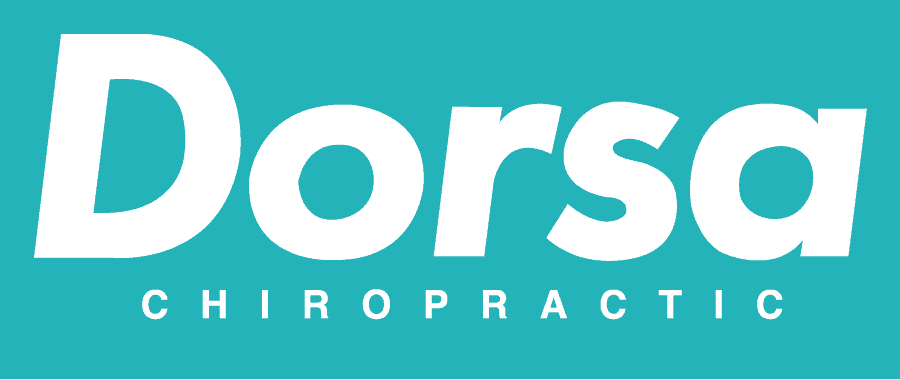Are you concerned that your neck, head, or shoulders have been injured following a car accident? Don’t rule out whiplash! Whiplash is the most common injury following an auto accident. While some people experience telltale signs of whiplash in the seconds following impact, others may not realize that something is out of alignment for several hours. Unfortunately, the delayed onset of whiplash symptoms causes many people to turn down medical attention at the scene of an accident. At Dorsa Chiropractic, we see just how seriously whiplash can impact the quality of life on a daily basis. Dr. Christopher Dorsa specializes in addressing common injuries like whiplash as part of Pro Performance’s comprehensive auto injury chiropractic services. While many people think that they can “shake off” injuries after an accident as long as they aren’t bleeding, the reality is that “invisible” injuries can cause pain that can linger for years to reduce your quality of life.
Could I Have Whiplash?
Many people don’t realize they are suffering from whiplash because they don’t know the symptoms of whiplash. Making matters just a little more confusing is the fact that whiplash can feel different for different people depending on the severity of the collision. Here’s a rundown of the potential signs and symptoms of whiplash:
- Neck pain.
- Neck stiffness.
- Pain that increases with neck movement.
- Lost range of motion in the neck.
- Headaches that start at the base of the skull.
- Tenderness in the shoulders.
- Tenderness in the arms.
- Tenderness in the upper back.
- Numbness and tingling throughout the arms.
- Dizziness.
- Blurry vision.
- Persistent ringing in the ears.
- Irritability and mood changes.
- Difficulty with concentrating.
- Sudden memory issues.
You don’t have to experience all of these symptoms to be diagnosed with whiplash. Few people do. In fact, most people will only experience one to two symptoms of whiplash. Something that surprises many people about whiplash is that it can create “cognitive” issues that impact memory, performance, and mood. It’s actually possible for whiplash to be combined with a concussion that is caused by the brain making contact with the skull during a fast, forceful motion caused by a collision.
What Causes Whiplash?
Whiplash is most commonly experienced after rear collisions. However, any sort of forceful movement can cause whiplash. In fact, people frequently experience whiplash from things like sports, fights, and falls. It’s the fast, forceful back-and-forward motion that occurs when you’re in an accident that causes whiplash to happen. The strain created in this split-second motion can throw bones and discs out of alignment. Your body won’t default back to its “natural alignment” after this type of force. It will be necessary to manually readjust your spine, neck, and shoulders to correct the imbalance. Anyone can experience whiplash. However, you may be at greater risk for serious and debilitating whiplash symptoms if you’re older, you have existing back pain or you’ve had whiplash in the past.
How Does a Chiropractor Treat Whiplash?
Spinal manipulation is the default treatment for whiplash. During your adjustment, Dr. Dorsa will identify the specific joints that are out of position. He will then perform a chiropractic adjustment to restore their natural positioning using gentle hand movements. In some cases, swifter motions may be needed if a joint is severely constrained. In addition, Dr. Dorsa can address any bulging or aggravated discs that formed as a result of the constrained joint sliding out of proper position.
Many patients do wonderfully with this course of treatment that relies solely on manual adjustments. However, other patients require more advanced techniques for addressing severe tension and constraint within the joints and muscles. Decompression therapy is a technique that uses an FDA-approved motorized traction table to slowly relieve pressure from the discs in your back. This method utilizes both gravity and body weight to give Dr. Dorsa an opportunity to perform gentle stretching exercises that relieve tension. These are far from the only two treatments available for treating whiplash. There are many targeted, cutting-edge treatments used today to help people get lasting relief. When speaking with Dr. Dorsa about your whiplash pain, you may hear him suggest some of the following treatments:
- Laser therapy that promotes tissue healing and regeneration.
- Muscle-release therapy that pinpoints trigger points to release muscle knots and tension.
- Electrical stimulation.
- Kinesio Taping.
- Instrument-guided manual adjustments.
- Stabilizing exercises.
It’s also so important to look at the role your lifestyle plays in healing from whiplash. While great strides can be made in our office, the truth is that a plan for whiplash recovery is incomplete if it doesn’t take into account what you do the rest of the time. Dr. Dorsa uses his expertise in sports medicine and holistic wellness to help patients suffering from whiplash to adopt ergonomic practices that support the healing process around the clock. The importance of using proper posture when working, sleeping, working out, and performing everyday tasks cannot be understated when you’re in the delicate recovery period. What’s more, the techniques that are learned during your recovery can help you to enjoy better spinal and musculoskeletal health for the rest of your life! Many doctors don’t screen for whiplash when they see patients following accidents. This can leave you in a situation where your most serious injury is completely overlooked. What’s more, the default treatment for classic whiplash symptoms is pain medication. Some people who live with chronic pain stemming from untreated whiplash are told that surgery is the only treatment option. In reality, there’s a whole world of nonsurgical, noninvasive treatment options for addressing whiplash that is focused on removing the source of tension or compression responsible for pain and inflammation.
The Benefits of Chiropractic Care for Treating Whiplash
Years and years of clinical studies show that chiropractic care improves cervical range of motion and pain levels when used in the management of whiplash. Ignoring whiplash is a mistake that many people live to regret. Research shows that the majority of people who experience whiplash go on to experience chronic neck or back pain for years after the initial injury. An analysis released in the summer of 2021 shows that whiplash injuries significantly impact the residual symptoms of shoulder stiffness, headache, and arm pain 20 years down the road! Many people feel like they are locked in a prison of physical and mental pain after experiencing whiplash. Residual whiplash symptoms can make it hard to work, exercise, enjoy time with family and participate in daily life. What’s more, the way that many people begin to compensate their movements to account for the pain, numbness, and reduced range of motion they’re experiencing in the neck, shoulders, and back can actually create serious spinal stiffness that brings on even more symptoms.
Get Whiplash Treatment in Denver, Colorado
It’s never too late to get treatment for whiplash if you’ve been in an accident. Seeing a chiropractor can actually play an important role in getting your claims accepted if you’re pursuing compensation from an insurance company following an accident. Chiropractors are able to document treatments that verify specific injuries caused by accidents. It’s also possible that whiplash isn’t the only injury caused by your accident. Dr. Dorsa can conduct a full-body assessment to help identify any overlooked injuries that could be creating pain, discomfort, or reduced range of motion. Don’t suffer from untreated whiplash for another day. Call Pro Performance in Denver today for your consultation!

Welcome to Dorsa Chiropractic. We started this practice to help people like you feel great!
When you visit us here at Dorsa Chiropractic, we’ll go over your injury, pain points, or general wellness goals. Our doctors will conduct an assessment to verify the root of your physical symptoms to come up with a plan for bringing your body back to health.

